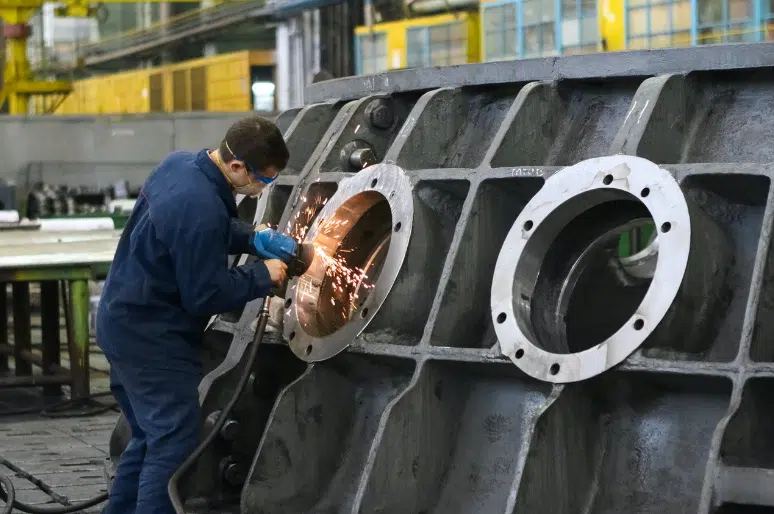The success of one company can be attributed to numerous different factors. Productivity, teamwork, motivation, and efficiency are often listed as some of the top contributing factors. However, it is safe to say that neither of these important prerequisites can be successfully attained if your employees are limited by faulty, misused, or obsolete equipment.
If we want to help our employees to unleash their full potential, we have to provide them with equipment and tools able to keep up with them. Let us then take a look at a couple of useful tips that should help you to keep your business equipment in top shape and allow your workers to do what they do best without any obstacles.
Introduce lean manufacturing principles
If you are unfamiliar with the term, lean manufacturing principles are mostly concerned with maximizing the potential of your equipment and doing more with less. One of their main focuses is to reduce waste be it in the form of time, workspace, movement, or resources. This way, potential weaknesses of your equipment are counterbalanced by more streamlined and better-organized ways of production. Your efforts should be primarily focused on:
- More efficient workflow management
- Iterative development
- Optimizing production system
- Eliminating excess inventory, idling, defective products, waste of processing, underutilized tools, etc.
Prioritize return of investment (ROI)
Some companies spend countless years without performing an audit with the purpose of pointing out obsolete procedures, equipment, and technologies. Because of that, they tend to experience major performance drops and keep pumping money into processes that are no longer viable. So, your goal here will be to identify the manufacturing instances that have the biggest impact on the overall ROI of your company and put your money and efforts there. Once the investments start returning you will have an option to focus on other, less-productive areas or retire outdated tools altogether.
Introduce weekly and monthly inspection and maintenance
Most of the problems that eventually blow up into major malfunctions can be easily cut down at the root if you just put more effort into inspection and maintenance. For instance, corroded iron, steel, and copper that may have a huge impact on the efficiency of your equipment can be successfully prevented with sulfatreat h2s removal equipment only if the indicators are noticed early. Therefore, you should assign your workers with weekly and monthly inspection and maintenance duties so these minor issues can be spotted and remedied before they blow up into much more serious problems.
Train your staff to use the equipment properly
This one goes without a saying, but using the equipment in an efficient manner can considerably extend its lifespan. Keeping that in mind, we have to admit that, as soon as we find out some ways that provide the most immediate or the most convenient results, we settle in those ways and stop exploring other production options. Going over equipment manuals, finding new ways to organize the shifts to avoid putting too much pressure on the equipment pieces over extended periods of time, and setting up relevant KPIs may point out new, efficient, and far more economical production methods.
Specialize in your business and cut the rest
One of the main challenges with keeping the business equipment in top-tier shape is mustering enough resources for such projects. Previously, we have suggested that you put your focus on the production junctions that produce the biggest returns. In this section, we will suggest that you go one step further and completely outsource all departments that are not directly involved in the production process. This move will not only cut the maintenance, upkeep, and upgrade costs related to these facets but also make your company far nimbler and help you focus on the processes that produce the greatest revenue. If you run a machine shop, you should focus on providing high-quality services including CNC milling, turning, laser and waterjet cutting services and have a separate drop shipping service to handle the shipping.
Explore standardization, good manufacturing practices, and quality control
All these methods are aimed at making your production leaner, faster, and more efficient as well as eliminating the mistakes that may have an impact on the performance and durability of your equipment. Out of the three, you should put the greater focus on GMP or good manufacturing practices that provide a set of detailed guidelines regarding the following topics:
- Quality management
- Handling of raw materials
- Maintenance of buildings and facilities
- Handling of equipment
- Validation and qualification
- Documentation and recordkeeping
- Organizing personnel
- Compliance training
Of course, in order for any of these measures to take effect, they need to be enforced on all company instances. That is why implementation should be accompanied by extensive employee training and education actions.
We hope these few suggestions will help you get a general outlook of the moves you can take to keep your business equipment in top shape and attain a higher level of efficiency in the process. Most people try to solve these problems by ramping up inspection and maintenance activities. But, they are only curing the symptoms and not the cause of the disease. If you want to put your company on healthy foundations, you need to start working from the ground up.




Related Posts